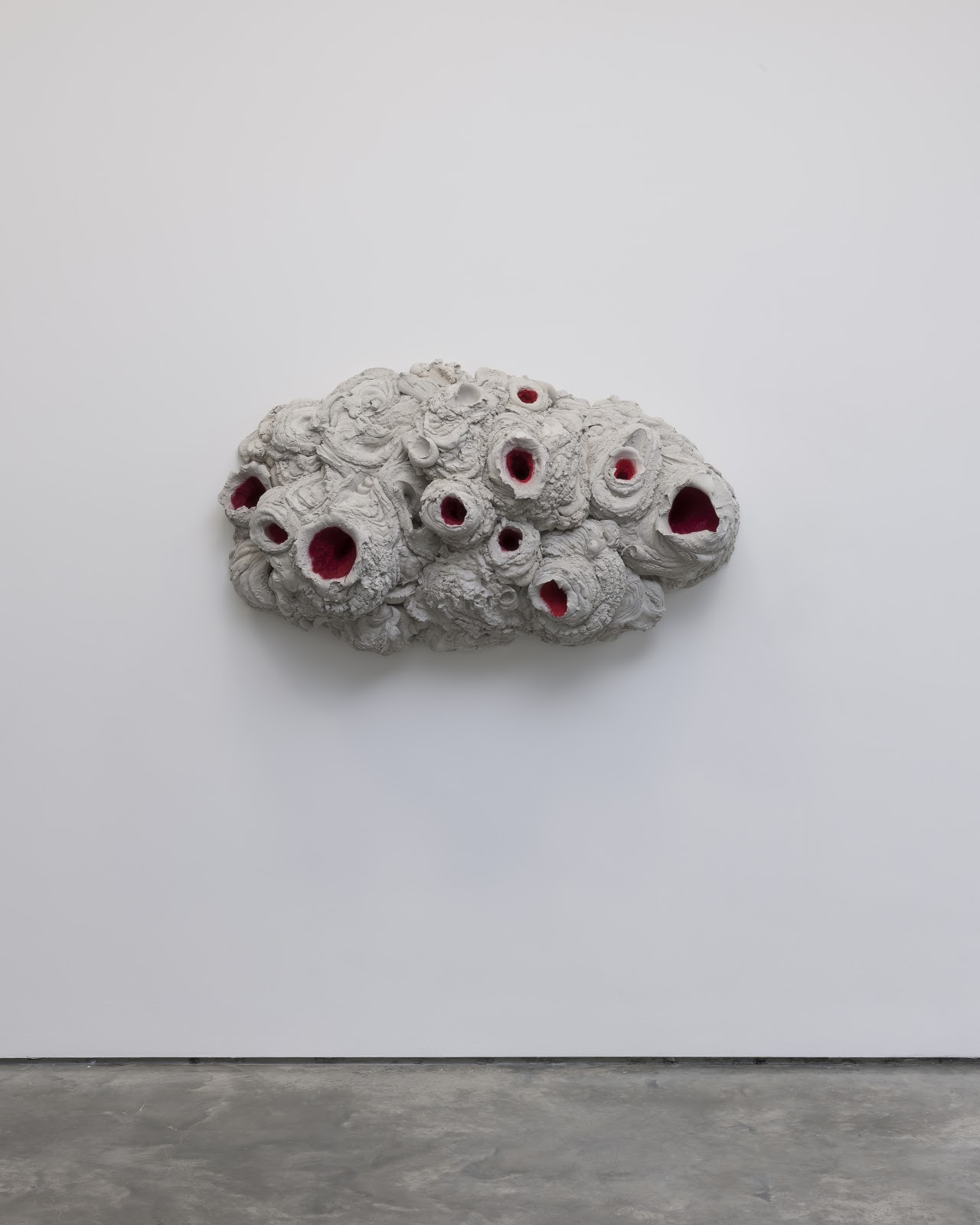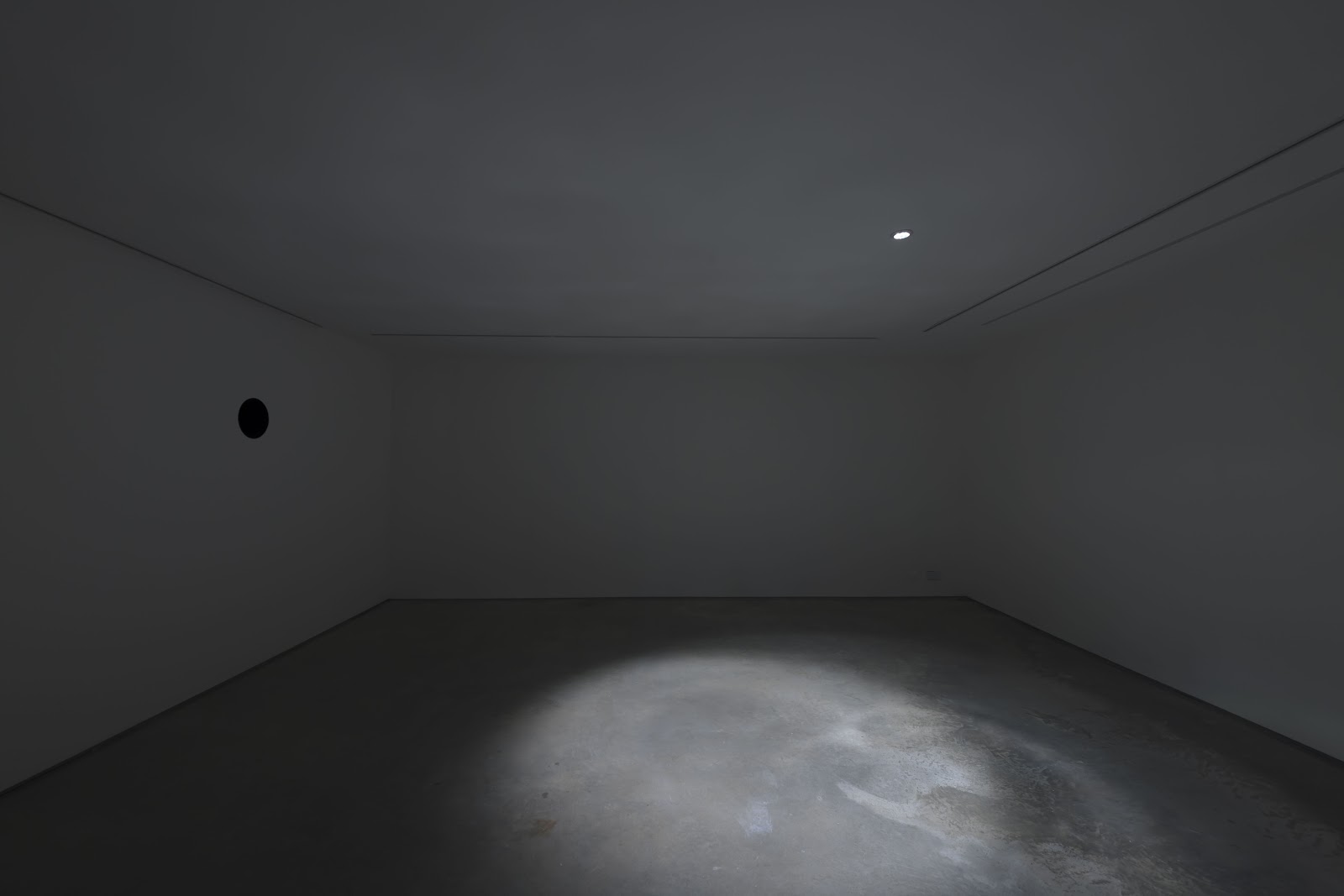11/10/12
Anish Kapoor
Lisson Gallery, 29
& 52-54 Bell Street
10 October – 10
November 2012
To mark thirty years of the artist’s collaboration with the
gallery, Lisson is currently giving over both of its Bell Street spaces, as
well as the sculpture courtyard at number 29, to Anish Kapoor, offering him the
chance to show an entirely new body of work, created in his studio over the
past year.
Kapoor, who describes himself as “an artist who’s in between
painting and sculpture,” started these works with a “simple proposition”: is it
possible to make earth into sky? According to him, yes, it is. And this is
achieved, it would appear, through using a mixture of organic materials and
colours, by playing with scale, positioning small works next to and amongst
larger ones, and by turning things inside out and upside down.

“I’m deeply interested in where things begin,” says Kapoor.
The works in this exhibition look for places of origin; proto-places. They are
simple forms, with a certain gestalt. Moving on from his earlier primary colour
pigment works, Kapoor here has turned to using earth. In the Shadow of the Tree and the Knot of the Earth III looks, to
me, like a beached whale, whilst In the
Shadow of the Tree and the Knot of the Earth VI could be a wave lapping the
shore, and In the Shadow of the Tree and
the Knot of the Earth II, a volcanic cloud. Sculptures are laid out
contrasting the geological and biological processes of autogeneration and
erosion. Pump-generated concrete works of built-up deposits (e.g. Spittle), described by Kapoor as “a lump
of stuff, almost as if unmade, proto-architectural”, stand next to polystyrene
creations, eaten away by resin, and liberally coated in marble dust, evoking
the natural forms of rock and coral (e.g. A
Ghost’s Endeavour and Erosion).
There are also smaller cement pieces, hanging on the wall, volcanic and
cratered, evoking, Kapoor suggests, stigmata and the cult of St. Sebastian.

The most recognisably Kapoor room is the back room at number
29, which is hung with six perfect fibreglass hemispherical monochromes, with
which Kapoor confesses to having had a long love affair. “[Monochrome] is the
thing in my practice which I keep coming back to. I work in fibreglass a lot
too – it’s very versatile.” Having spent many years making shiny objects,
however, he is now experimenting with a mix of watercolour which produces
something neither shiny nor matt. “I’m interested in colour as a condition, as
a singularity: psychologically, physiologically, phenomenologically,” explains
Kapoor, and, indeed, the works create a fully state-effecting experience: stand
close enough to Green, for example,
so as to be fully immersed and block out all surrounding vision, and it creates
strange and hypnotic visual waves of yellow and blue, and an amplified echoing
of voices and sounds in the surrounding gallery. Step back and look away, and
everything becomes temporarily rose tinted.

The sculpture yard is home to the most recent work on
display, Intersection, assembled only
in the past couple of weeks, and made of Corten steel, the same material as in
the canopy element of the controversial Arcelor Mittal Orbit sculpture at the
Olympic Park. With reference to Brunelleschi and the long tradition of
architecture, Kapoor seeks to “give geometry a strange organic presence,” and
to play with contradictions by creating an object whose interior is larger than
the shell which contains it – bringing the sky down to earth and turning it in
upon itself.

The newest departure for Kapoor, however, is working with
sound. Upstairs at numbers 54-56, he has created a full room installation, Anxious, which he describes as an
“anxiety room”. There is nothing really there but a spotlight and a very low
frequency sound, scarcely audible, but, apparently, the same frequency as has
been recorded in haunted locations. The work is phenomenologically driven and
deeply auto-suggestive, making even Kapoor himself feel anxious. Indeed, as I
stood and moved about the space, feeling the slight changes in intensity, my
chest tightened, my heart began to thump, and I found myself gasping for air.

Kapoor, who also has a big exhibition coming up at the
Museum of Contemporary Art in Sydney, Australia, from December, is not yet
resting on his laurels, despite his claim that he’d rather like to. “There’s
still a lot to do,” he says, “so I keep doing it.”
Images:
Anish Kapoor
Installation View, Lisson Gallery, London
2012
Courtesy of the artist and Lisson Gallery
Anish Kapoor
Untitled
2012
Cement
Courtesy of the artist and Lisson Gallery
Anish Kapoor
Installation View, Lisson Gallery, London
2012
Courtesy of the artist and Lisson Gallery
Anish Kapoor
Intersection
2012
Corten steel
Courtesy of the artist and Lisson Gallery
Anish Kapoor
Anxious
2012
Enclosed space, sound
Courtesy of the artist and Lisson Gallery